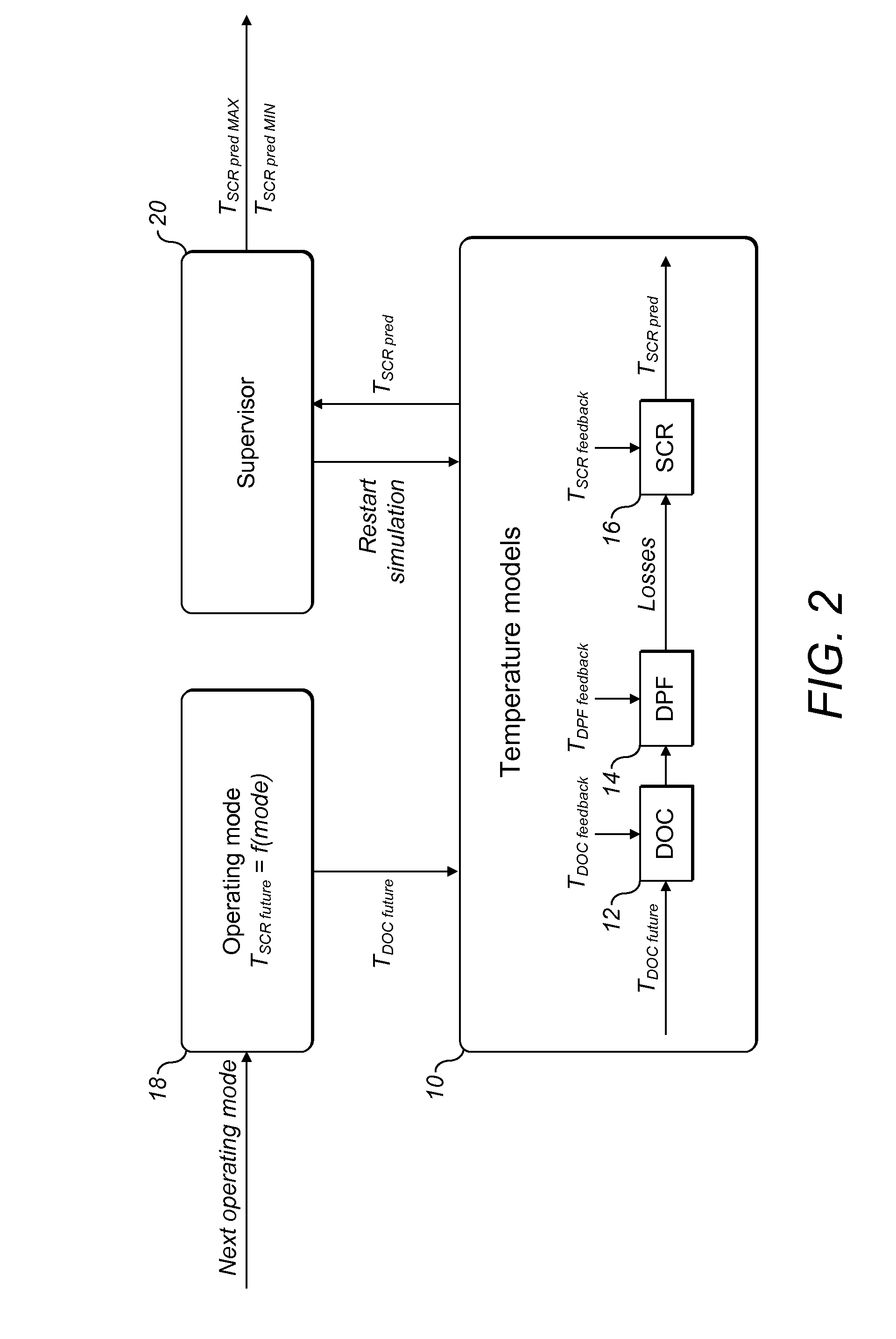Internal combustion engine with exhaust aftertreatment and its method of operation
- Summary
- Abstract
- Description
- Claims
- Application Information
AI Technical Summary
Benefits of technology
Problems solved by technology
Method used
Image
Examples
Embodiment Construction
[0033]As explained with reference to FIG. 1 hereinabove, a simple temperature-based control of the SCR catalyst heat-up mode, wherein heating is stopped when it is measured that the SCR catalyst has reached its light off temperature, is not optimal since it typically leads to a temperature overshoot. This effect, due to the thermal inertia of the components in the exhaust line, implies excessive fuel consumption, while the higher temperature of the SCR catalyst is not even useful in terms of NOx conversion.
[0034]The present invention provides an optimized thermal control of exhaust aftertreatment means such as e.g. an SCR-catalyst in an engine exhaust line, wherein the SCR is located downstream of first exhaust aftertreatment means.
[0035]A preferred embodiment of this method will now be described with respect to FIGS. 2 to 5 as applied to a diesel internal combustion engine comprising an exhaust line with first exhaust aftertreatment means comprising a diesel oxidation catalyst (DOC...
PUM
 Login to View More
Login to View More Abstract
Description
Claims
Application Information
 Login to View More
Login to View More - R&D
- Intellectual Property
- Life Sciences
- Materials
- Tech Scout
- Unparalleled Data Quality
- Higher Quality Content
- 60% Fewer Hallucinations
Browse by: Latest US Patents, China's latest patents, Technical Efficacy Thesaurus, Application Domain, Technology Topic, Popular Technical Reports.
© 2025 PatSnap. All rights reserved.Legal|Privacy policy|Modern Slavery Act Transparency Statement|Sitemap|About US| Contact US: help@patsnap.com



